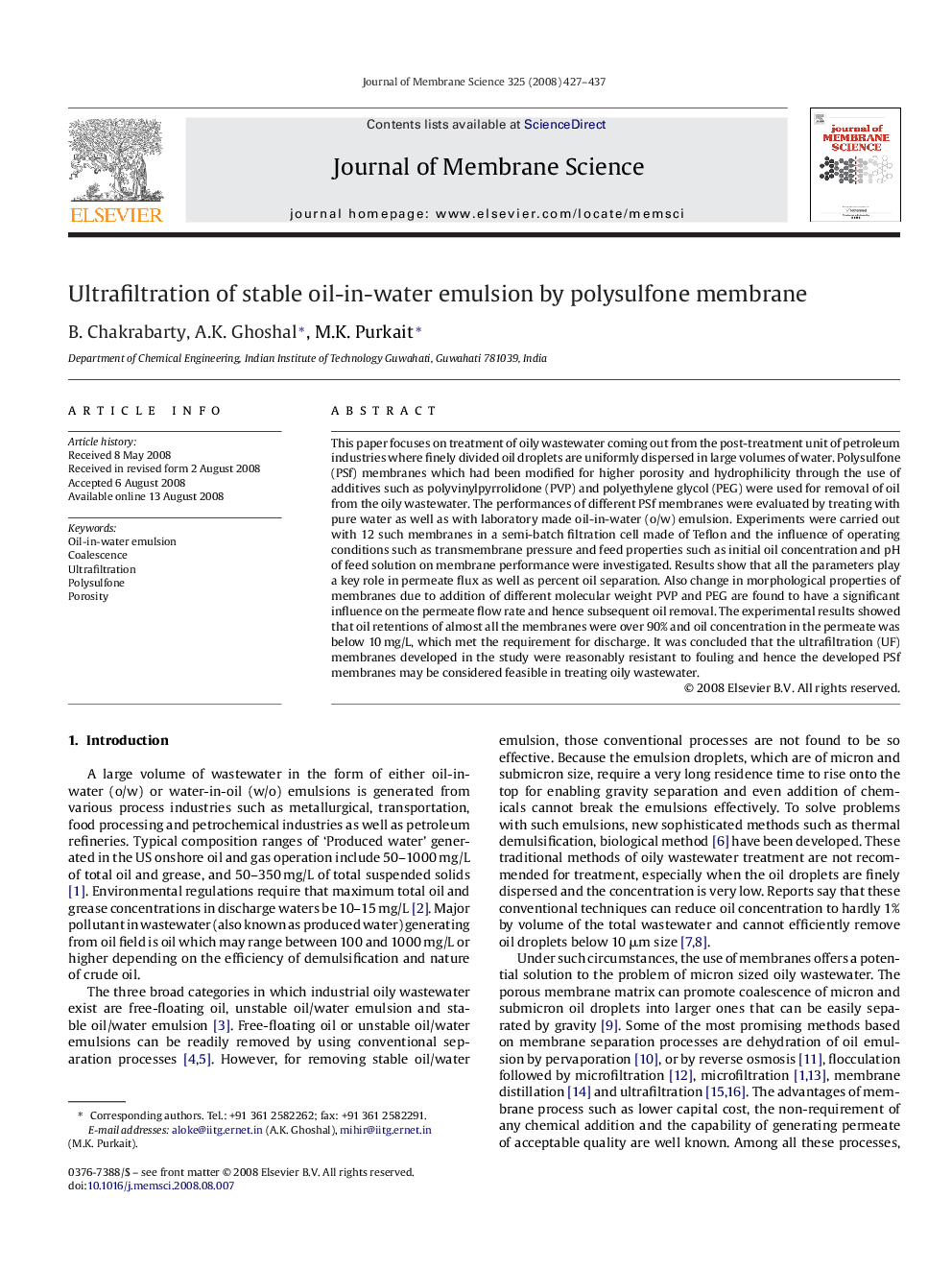| Article ID | Journal | Published Year | Pages | File Type |
|---|---|---|---|---|
| 637751 | Journal of Membrane Science | 2008 | 11 Pages |
This paper focuses on treatment of oily wastewater coming out from the post-treatment unit of petroleum industries where finely divided oil droplets are uniformly dispersed in large volumes of water. Polysulfone (PSf) membranes which had been modified for higher porosity and hydrophilicity through the use of additives such as polyvinylpyrrolidone (PVP) and polyethylene glycol (PEG) were used for removal of oil from the oily wastewater. The performances of different PSf membranes were evaluated by treating with pure water as well as with laboratory made oil-in-water (o/w) emulsion. Experiments were carried out with 12 such membranes in a semi-batch filtration cell made of Teflon and the influence of operating conditions such as transmembrane pressure and feed properties such as initial oil concentration and pH of feed solution on membrane performance were investigated. Results show that all the parameters play a key role in permeate flux as well as percent oil separation. Also change in morphological properties of membranes due to addition of different molecular weight PVP and PEG are found to have a significant influence on the permeate flow rate and hence subsequent oil removal. The experimental results showed that oil retentions of almost all the membranes were over 90% and oil concentration in the permeate was below 10 mg/L, which met the requirement for discharge. It was concluded that the ultrafiltration (UF) membranes developed in the study were reasonably resistant to fouling and hence the developed PSf membranes may be considered feasible in treating oily wastewater.
